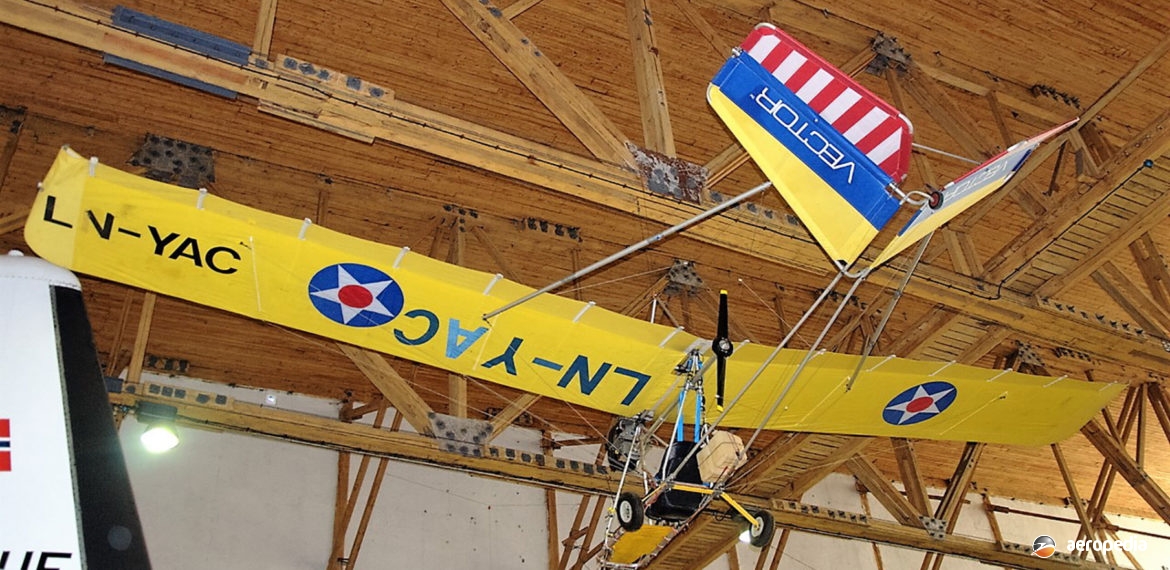Photograph:
An Aerodyne Systems Vector 610 LN-YAC in a museum at Sola in Norway (Author’s collection)
Country of origin:
United States of America
Description:
Single-seat light sport aircraft
Power Plant:
One 16 kw (22 hp) Zenoah G-25B single-cylinder, two-stroke, air-cooled engine
Specifications:
- Wingspan: 10.7 m (35 ft 2 in)
- Length: 5.5 m (18 ft)
- Height: 2.4 m (8 ft)
- Cruising speed: 72 km/h (45 mph)
- Stalling speed: 42 km/h (26 mph)
- Rate of climb: 183 m/min (600 ft/min)
- Range: 201 km (125 miles)
- G limits: +5.7 / -2.8G
- Fuel capacity: 19 litres (4.2 Imp gals)
- Empty weight: 88 kg (195 lb)
- Loaded weight: 202 kg (445 lb)
History:
The Vector series of ultralight aircraft was designed in the United States by Messrs Berndt Petterson, Michael McCarron and Paul Yarnell to US FAR 103 Ultralight Vehicle Regulations and was developed in a series of models by Aerodyne Systems, being introduced to the market in kit form in 1982. It was a cable-braced high-wing single-seat light aircraft with a V-tail and had an open cockpit, a tricycle undercarriage and its engine mounted in a pusher configuration behind the pilot.
The aircraft was built from aluminium tube bolted together, the flying surfaces being covered in Dacron. The nose wheel was not steerable and a caster wheel was mounted at the end of the tail boom. Production of the series has been completed. Variants available were the Vector 600, which had two 7 kw (9 hp) Chrysler engines and had two-axis control; the Vector 610, an improved variant with a strengthened airframe and enlarged spoilers; the Vector 627 with a 21 kw (28 hp) Rotax 277 engine; and the Vector 627SR with a 26 kw (35 hp) with a Rotax 377 engine.
Examples have been registered in New Zealand, including a Vector 610 which became ZK-FJC (c/n MAANZ-260) in June 1984 but the registration of which was cancelled by the CAA in June 2001.

